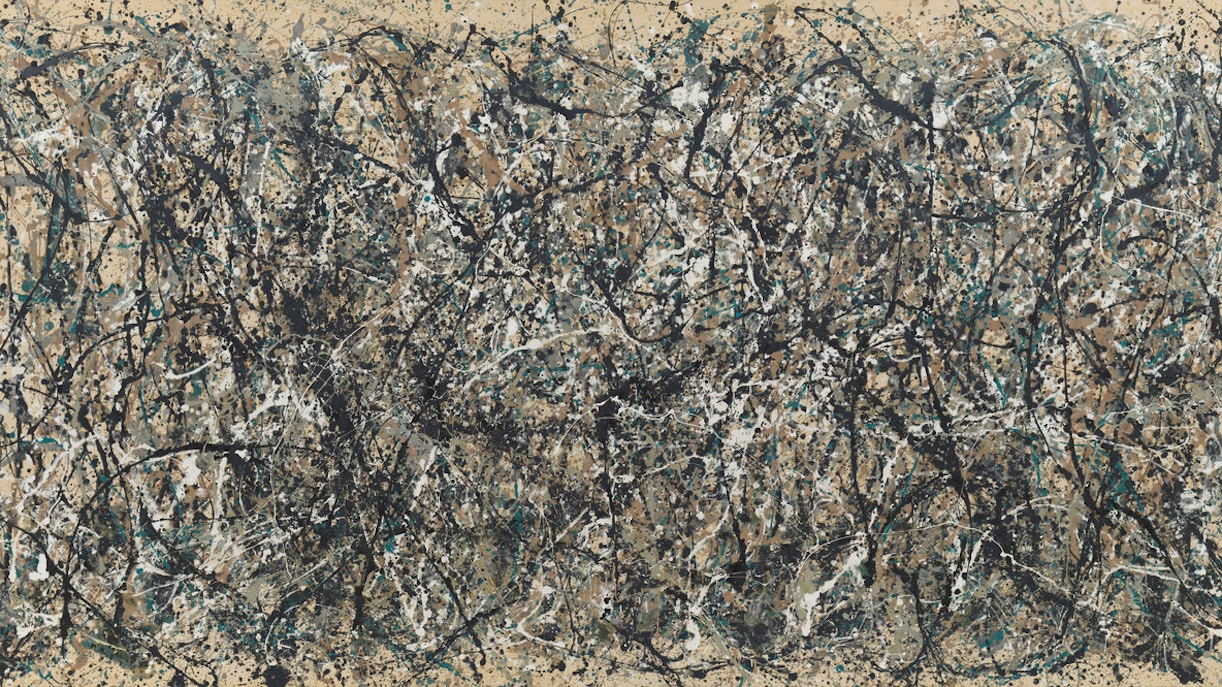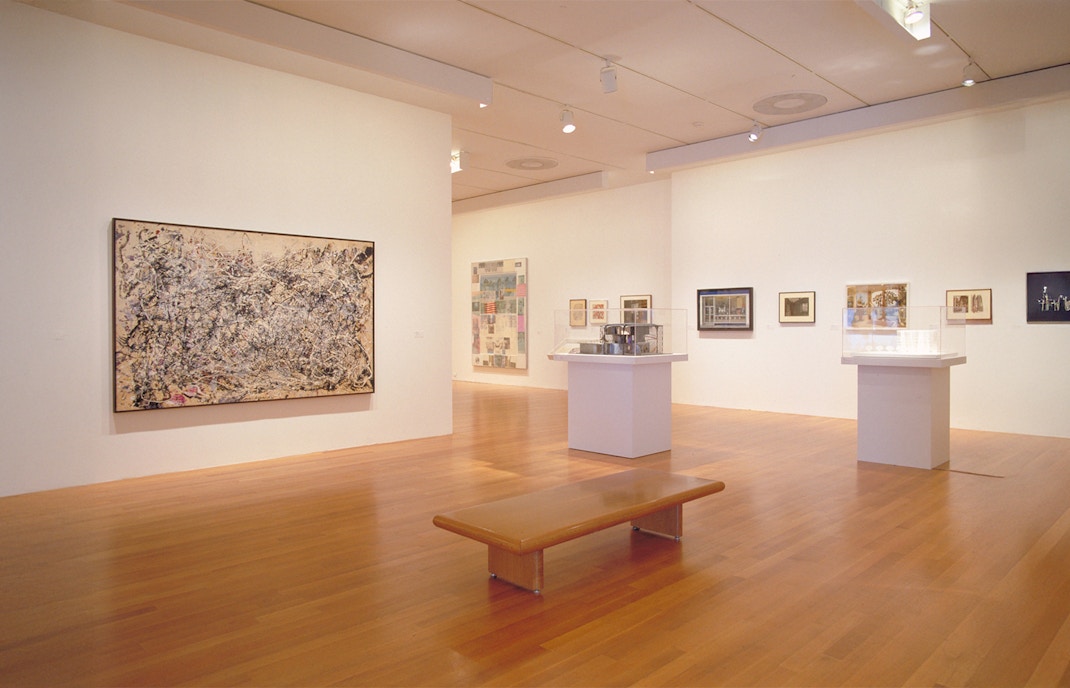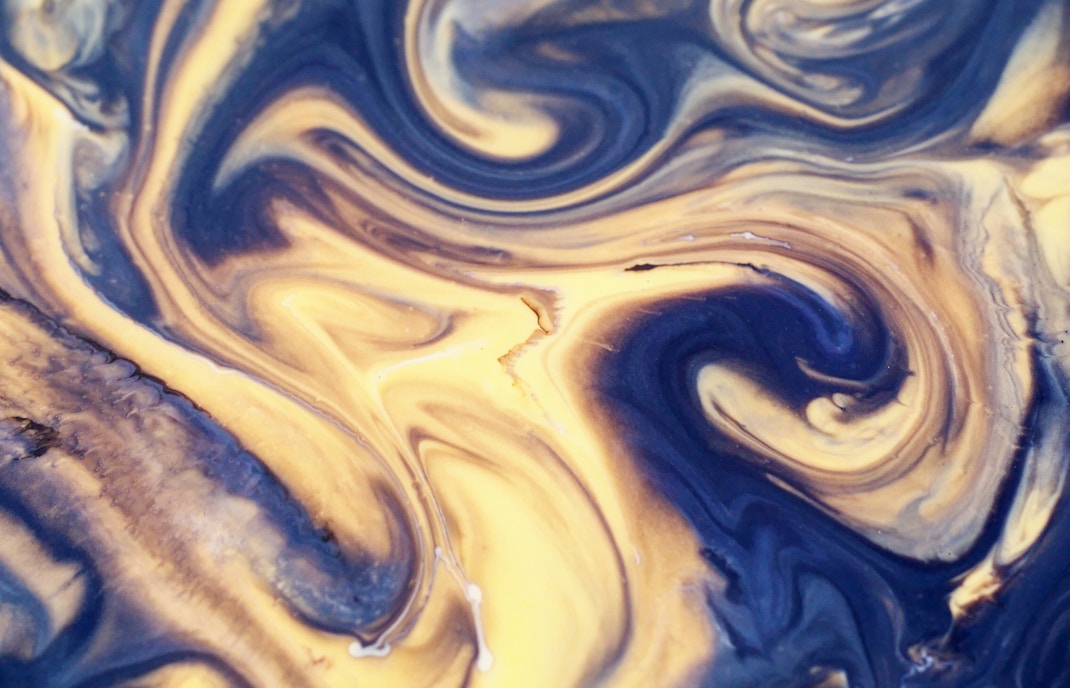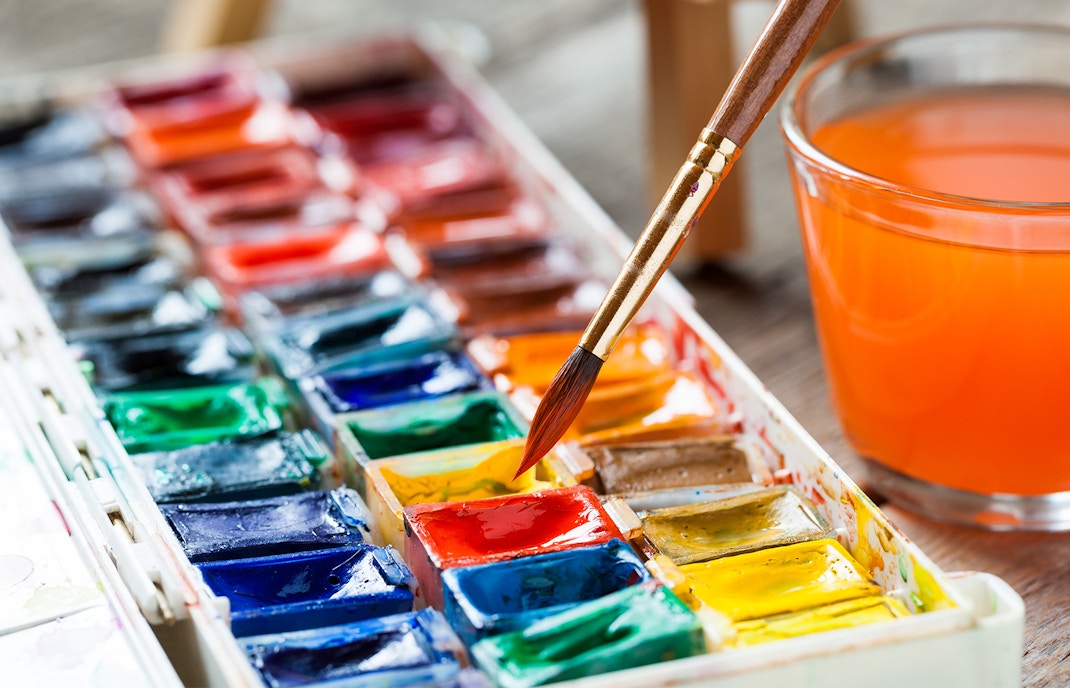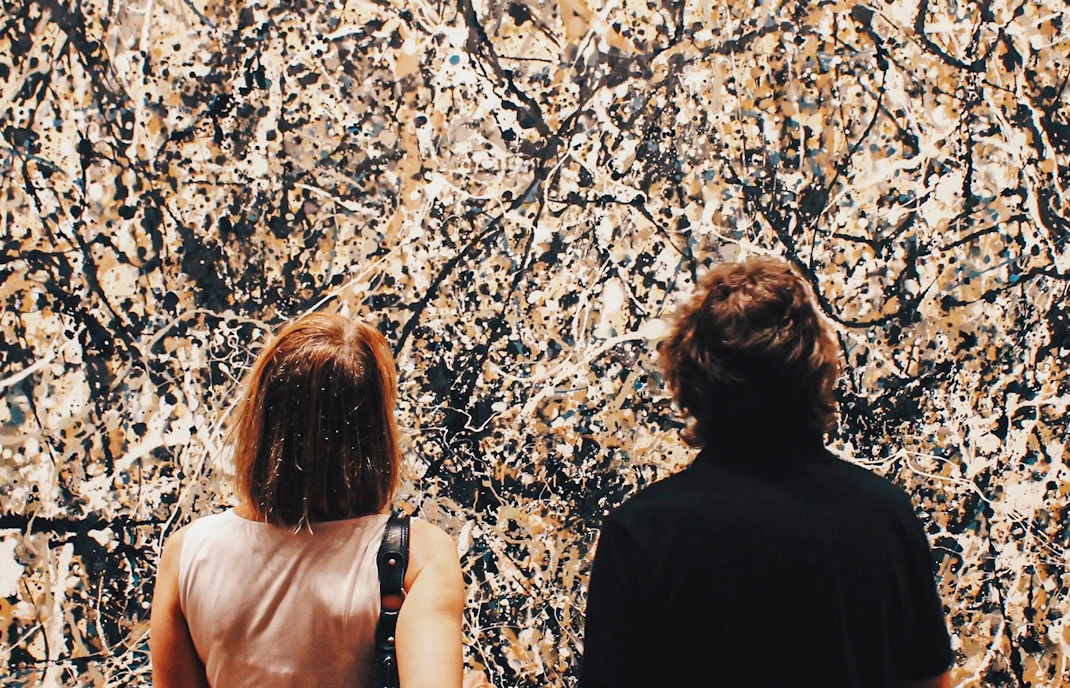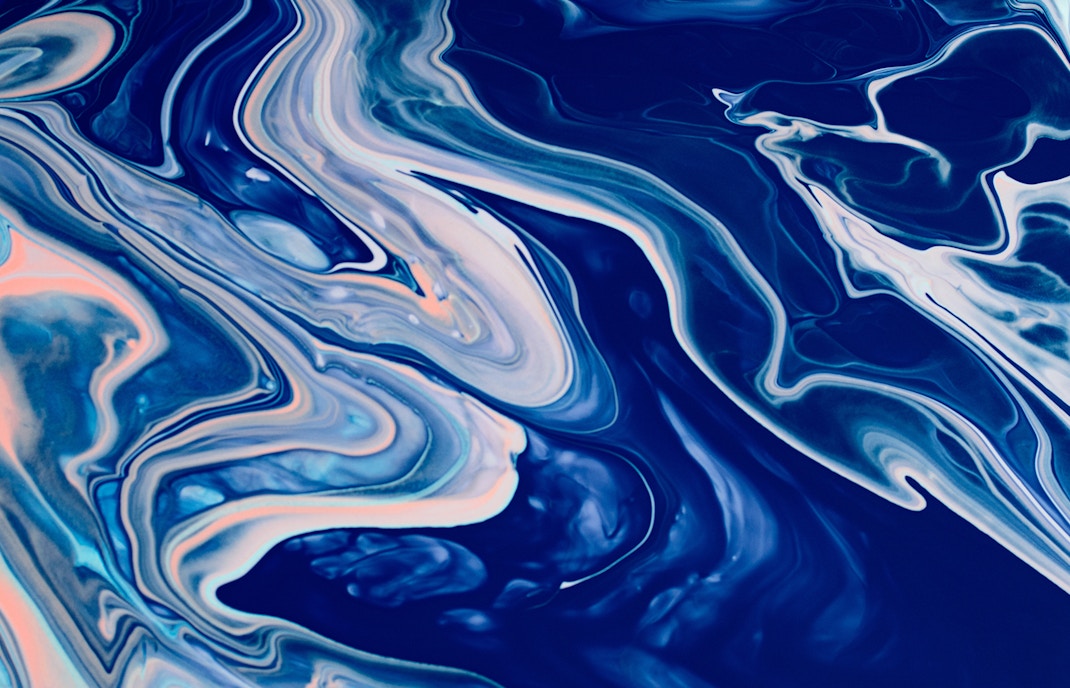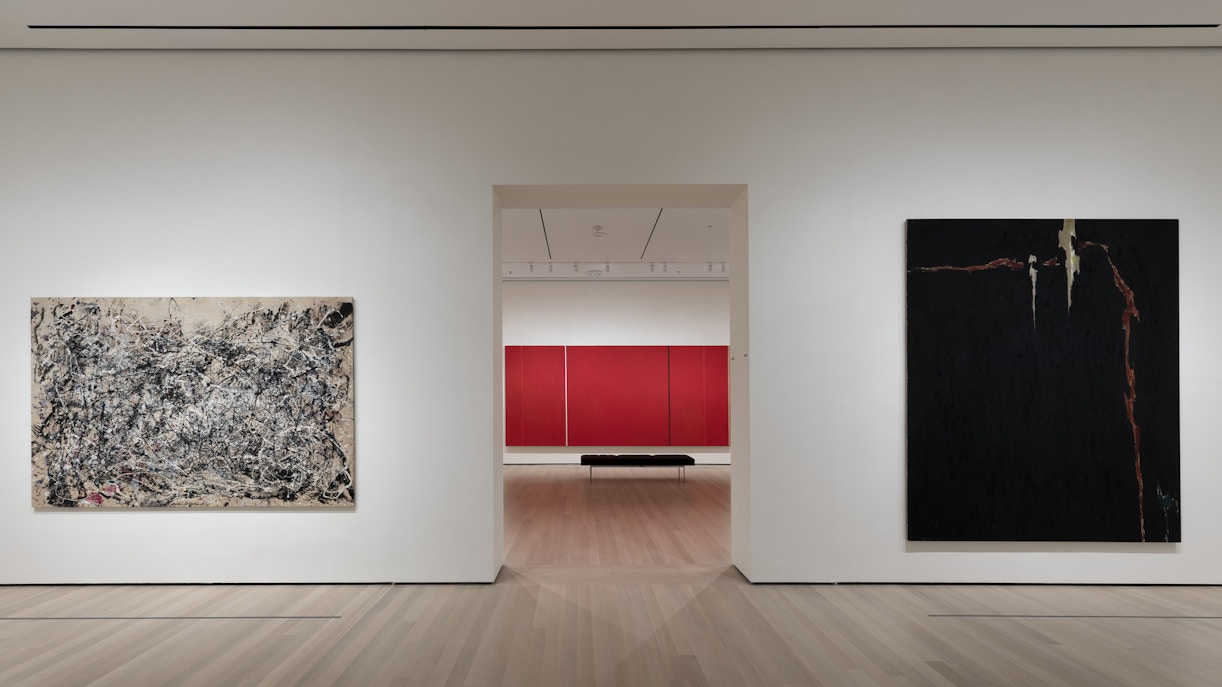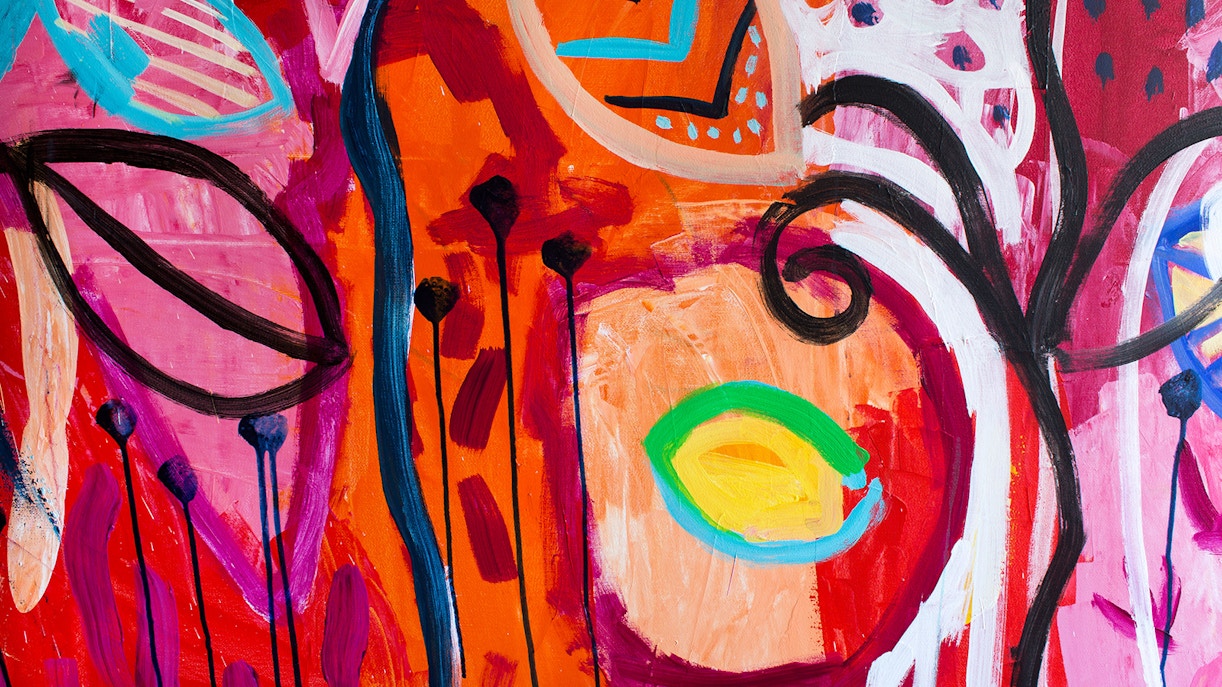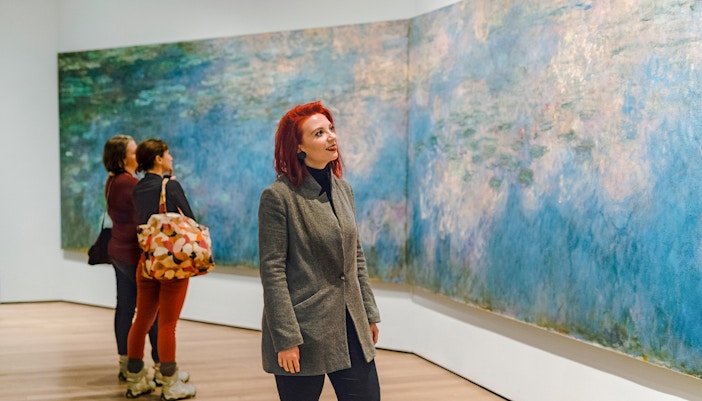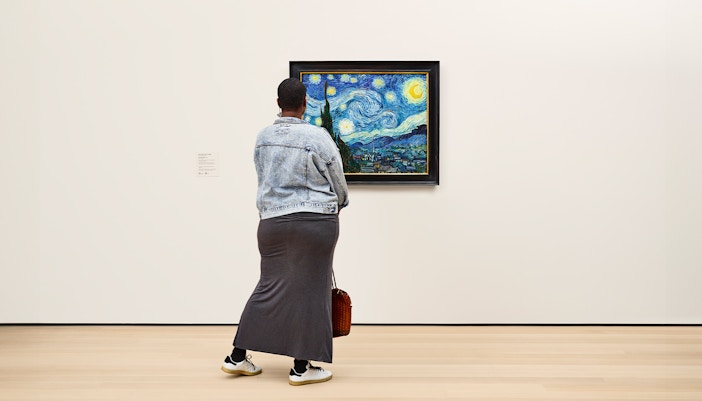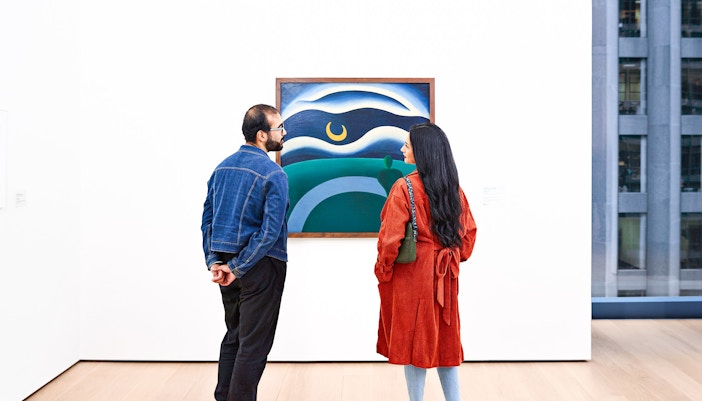The wall-sized abstract painting is one of three large-scale pieces Jackson Pollock produced in quick succession in 1950, the other two being Autumn Rhythm (Number 30) and Blue Poles. It was created in a similar fashion: by laying a raw canvas on the floor and using multiple non-traditional tools and techniques, such as pouring paint straight out of the container, flicking, dripping, and moving across the canvas as if in a trance.
Date: 1950
Medium: Oil and enamel paint on canvas
Art style: Abstract Expressionism
Size: 269.5 x 530.8 cm
Displayed at: Museum of Modern Art, New York
Other locations:
- Autumn Rhythm (Number 30): The Met NYC
- Blue Poles: National Gallery of Australia
